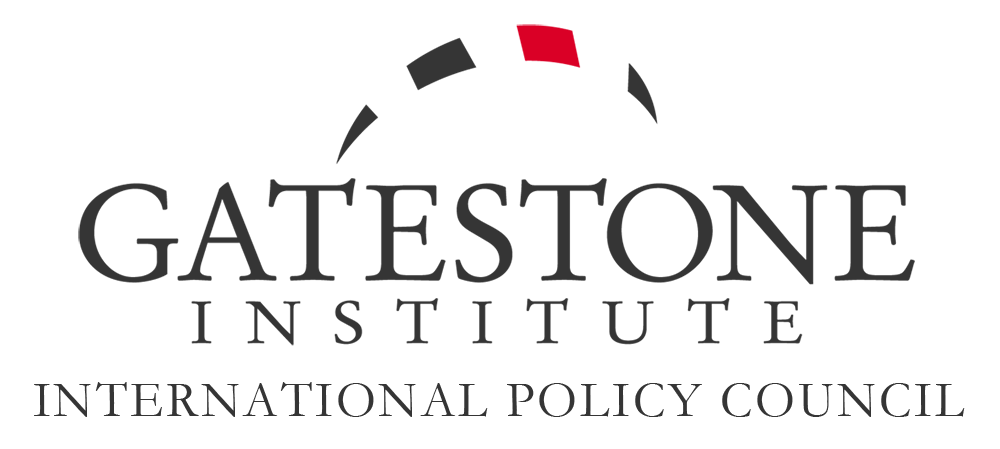In this mailing:
- Con Coughlin: Iran Still Hiding Key Parts of its Nuclear Programme, US Trying Bribery Again
- Judith Bergman: China Challenges the US on Iran
by Con Coughlin • April 1, 2021 at 5:00 am
The latest evidence that Iran is continuing to conceal vital elements of its nuclear programme from the outside world suggest that, even if there is a resumption of negotiations on Tehran's nuclear programme, the regime has little genuine interest in complying with the terms of any future deal. In another provocative move, Iran's conservative-dominated parliament has ordered the government to start limiting some inspections by the International Atomic Energy Agency (IAEA), the UN-sponsored body responsible for monitoring Iran's nuclear activities. The move by the Iranian parliament comes after the IAEA published a report revealing that last summer inspectors found uranium particles at two Iranian nuclear sites that Iran tried to block access to. The Biden Administration has also apparently been trying to sidestep legally-required congressional approval to funnel more money to Iran and other dictatorships through a new International Monetary Fund programme, "special drawing rights" (SDRs). Through them, Iran would receive an additional $4.5 billion, usable in other currencies. According to the Wall Street Journal, which referred to the program as "Special Dollars for Dictators", Iran's leadership will most likely use these newfound billions to strengthen domestic repression, to intensify regional adventurism -- Iran's proxy Houthi rebels in Yemen have already targeted a "large Saudi oil field" -- and to escalate their nuclear programme still further.

Fresh evidence is emerging that Iran's regime is up to its old tricks by attempting to conceal key elements of the programme from UN inspectors. Pictured: The Isfahan uranium enrichment facility in Isfahan, Iran. (Photo by Getty Images)
With the Biden administration seemingly keen to recommence negotiations with Tehran over its nuclear programme, fresh evidence is emerging that Iran's regime is up to its old tricks by attempting to conceal key elements of the programme from UN inspectors. Iran has a long and undistinguished history of seeking to conceal the existence of key elements of its nuclear programme dating back to 2002, when a group of Iranian dissidents first revealed the existence of the Natanz nuclear enrichment site. Enrichment is a crucial process in producing weapons-grade nuclear material, and the fact that Iran managed to build the massive underground facility about 100 miles to the south of Tehran in secret was the first major evidence that the regime was developing nuclear weapons.
Continue Reading Article
by Judith Bergman • April 1, 2021 at 4:00 am
According to a leaked draft of the comprehensive strategic partnership agreement, circulated last year, Iran will receive $400 billion dollars in Chinese investments over the next 25 years in key Iranian economic sectors, including energy, telecommunications, defense, infrastructure, banking, petrochemicals, railways and ports. According to the leaked draft, there will be also an expansion of military assistance, training and intelligence-sharing. Nearly 100 projects are cited in the draft. In return, Iran will commit to providing regular and heavily discounted oil, gas and possibly other natural resources to China. "Strategically, the BRI is how China is seeking to collapse Western-American dominance in the region peacefully... the BRI is a sophisticated Chinese plan to transfer hegemony from the West and the U.S. to China without war or conflict". — Dr. Mordechai Chaziz, author of China's Middle East Diplomacy: The Belt and Road Strategic Partnership, thediplomat.com, March 10, 2021. The timing seems hardly a coincidence, but rather an outcome of the Biden administration's appeasing overtures to Iran with its formal offer of restarting nuclear talks. The signing of the agreement itself can be seen as a Chinese-Iranian act of defiance against the US, undercutting sanctions against Iran by supplying the regime with an economic lifeline, while showing China off as an active global power that is able and willing to stand up to the US. For China, Iran is a welcome counterbalance to US influence in the region, as the only large regional power that is not aligned with the US, in addition to having enormous oil and natural gas resources and providing a large market of more than 80 million citizens for Chinese goods. "China is pivoting towards more autocratic regimes that represent greater stability for its supply lines than democracies that are, or may become, hostile to Beijing." — Verisk Maplecroft risk consultancy firm, March 17, 2021.

Pictured: Iran's Foreign Minister Mohammad Javad Zarif (right) and China's Foreign Minister Wang Yi at the signing of the China-Iran comprehensive strategic 25-year partnership agreement on economic and security cooperation, in Tehran, Iran on March 27, 2021. (Photo by AFP via Getty Images)
On March 27, China and Iran signed a comprehensive strategic 25-year partnership agreement on economic and security cooperation. The agreement was signed in Tehran, where China's Foreign Minister Wang Yi was visiting as part of his tour of the Middle East. Details of the agreement were not immediately published. The Iranian Foreign Ministry communicated that it was a "roadmap for cooperation" and that no "contracts" were included in it. "Prospects for cooperation, whether economic, political, cultural or strategic, have not been quantified, therefore it does not include numbers on investment or financial and monetary resources," a statement of the Iranian Foreign Ministry reported.
Continue Reading Article
|
|
|
|



